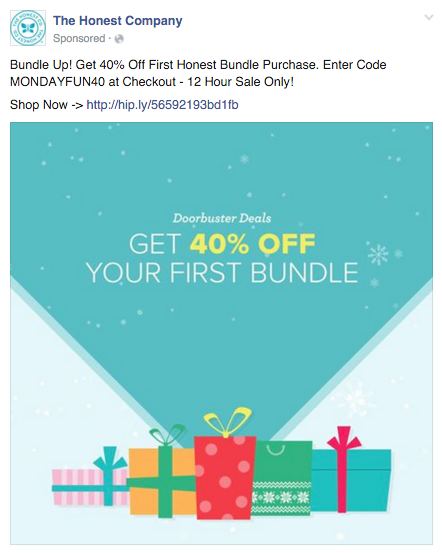 Is your social media audience losing interest?
Is your social media audience losing interest?
Do you want to tap into your followers' emotions?
Using psychology to connect with your target audience is a powerful way to engage and motivate them to take action.
In this article you'll discover five psychology principles you can use to improve your social media marketing results.

Listen to this article:
Where to subscribe: Apple Podcasts | Spotify | YouTube Music | YouTube | Amazon Music | RSS
#1: People Prefer Stories to Stats
In Made to Stick: Why Some Ideas Survive and Others Die, authors Chip and Dan Heath share research that reveals we're more likely to donate when we hear the story of an individual in need rather than data about an entire impoverished area.
Even though a region's suffering has a larger impact than that of an individual, the individual's story is appealing because we have an emotional response when hearing the experiences of others, not statistics and abstract information.
To apply this principle to your social media marketing, tell a story to reach your audience emotionally.
Guinness does this well through their marketing campaigns. Rather than spout information or simply show a scene, this ad takes the viewer through a complicated situation that gradually unfolds to reveal the outcome.
https://www.youtube.com/watch?v=rx0MRawkrj4
Ads like this one follow the “show, don‘t tell” principle. They lead audience members through a story they need to interpret for themselves based on the actions of the characters.
Your social media content can impress your audience and be more memorable if you share a personal experience; whether it‘s your own or someone else‘s. By creating a journey with a resolution, you can make an emotional impact on your viewers.
#2: Personal Benefits Generate Interest
Expressing how people can benefit from your product or service will help you increase engagement on social media.
Taco Bell's Twitter account socially engages its audience with its witty and interactive tweets. Most importantly, the people behind the account understand what makes people tick. Take a look at this popular tweet. Who wouldn't like a free meal?
Get World-Class Marketing Training — All Year Long!
Are you facing doubt, uncertainty, or overwhelm? The Social Media Marketing Society can help.
Each month, you’ll receive training from trusted marketing experts, covering everything from AI to organic social marketing. When you join, you’ll also get immediate access to:
- A library of 100+ marketing trainings
- A community of like-minded marketers
- Monthly online community meetups
- Relevant news and trends updates

Imagine what people are thinking as they watch the World Series. They're likely hoping someone steals a base with the promise of free breakfast from Taco Bell. This keeps the brand at the top of its audience members' minds.
Of course, you don't have to give everyone in the country a free breakfast to garner attention. There are other effective methods to let people know what you or your product can do for them. Taco Bell's strategy shows that captivating the audience begins with thinking about what they want, first and foremost.
Apple famously focused on the consumer when Steve Jobs described the iPod as “1,000 songs in your pocket.” Now imagine if he had described the features instead: high storage and smooth texture. People would probably be thinking, “So what? How does this apply to me?”
The next time you share something about your brand on social media, explain or show why it will make a difference in people‘s lives.
#3: Social Proof From Peers Increases Trust
These days, reviews and testimonials on products and services are available at the click of a button.
Consider a 2008 study that involved hanging public-service messages on residents' doors, asking them to use fans instead of air conditioning. Results found that telling a group that 77% of their neighbors were using fans was more effective than mentioning residents could save $54 a month.
What our peers do, impacts our decision-making.
Crate and Barrel's website invites customers to leave reviews for products and gives them the option of uploading a picture. Pictures help other potential customers visualize how the product would look in a home setting.

Discover Proven Marketing Strategies and Tips
Want to go even deeper with your marketing? Check out the Social Media Marketing Podcast! Publishing weekly since 2012, the Social Media Marketing Podcast helps you navigate the constantly changing marketing jungle, with expert interviews from marketing pros.
But don’t let the name fool you. This show is about a lot more than just social media marketing. With over 600 episodes and millions of downloads each year, this show has been a trusted source for marketers for well over a decade.

There are a number of ways to create social proof; show Facebook likes and post testimonials to tell your audience about how popular your product is. Crate and Barrel also encourages customers to load images of their products in use to Instagram with the hashtag #CrateStyle.

The most effective social proof, though, is created when you have unmoderated positive reviews. Your followers will know that your product or service is remarkable enough that happy customers vouched for you on their own account.
#4: Influencers Affect Credibility
Partnering with an authority figure will improve the perception of your brand if it's someone people trust, respect or like.
If the person is recognized and successful in his or her own career, it reflects positively on your brand. Sadly enough, the reverse is also true. If an endorser gets bad publicity or is not doing well, your brand might suffer, too. These principles apply even if the person is not an expert or authority in the field that he or she is promoting.
Professional tennis player Maria Sharapova is highly sought-after for endorsements because of her successful career and wide social media following. As an endorser of Tiffany & Co., among other brands, she uses her social media platforms to display products to her followers. Here, Maria shares a picture of a bracelet by Tiffany on her Instagram account.

When people are uncertain or don't know how to act in a situation, they often look to others for guidance. In Influence: The Psychology of Persuasion, Robert Cialdini revealed that people are more likely to follow instructions when they're given by an authority figure.
Ask a respected person in your industry to publicly endorse your brand. It can work wonders for building credibility. Can't find an authority figure? Build your own authority by using credibility markers such as sharing your previous experiences, educational background or recognition that you've received for your work.
#5: Scarcity Creates Demand
People want what they can't have. Cialdini's book Influence also discusses how people value something more if it's rare.
In 1985, Coca-Cola performed an experiment on whether people preferred the traditional Coke or their newer formula. In blind taste tests, 55% of participants preferred the new Coke. When the identities of the formulas were revealed, preferences for the new Coke went up by 6%. However, when the traditional formula was replaced, people preferred the old Coke.
One of the most effective ways to grab people's attention and make them take action is to make something scarce. In this Facebook post, The Honest Company uses the principle of scarcity by showcasing a deal that is available only for 12 hours.

People fear the chance of missing out on something, compelling them to act. You can create the feeling of scarcity by offering to give away or sell something in limited quantities or for a brief period of time.
You can also create the impression of scarcity by selling your brand on its uniqueness, whether through your brand's personality, emphasizing services that aren't offered elsewhere or highlighting advantages in the way your brand operates.
Conclusion
Social media is often the first point of contact with your target audience. Applying psychology to how you market to that audience gives you a head start on building an engaged community.
What do you think? Have you tried using these tactics to improve your social media marketing? Which psychological techniques do you find to be the most effective for your brand's content? Please share your thoughts and experiences in the comments below.

Attention Agency Owners, Brand Marketers, and Consultants

Introducing the Marketing Agency Show–our newest podcast designed to explore the struggles of agency marketers.
Join show host and agency owner, Brooke Sellas, as she interviews agency marketers and digs deep into their biggest challenges. Explore topics like navigating rough economic times, leveraging AI, service diversification, client acquisition, and much more.
Just pull up your favorite podcast app, search for Marketing Agency Show and start listening. Or click the button below for more information.

